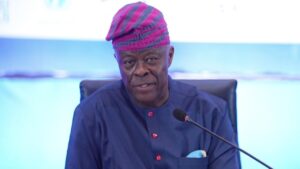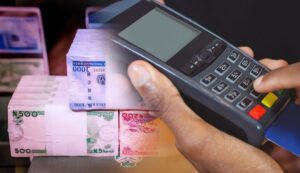Analysts back CBN on e-Naira in curbing fraud, enhancing remittance inflow
By Kayode Tokede
Analysts have supported the Central Bank of Nigeria (CBN) digital currency, stating that it is expected to curb fraud, manipulation of Naira and drive remittance into the country.
The CBN had taken actions against crypto transactions, but embraced the fourth industrial revolution as Nigerian Central Bank Digital Currencies (CBDC), “e-Naira”, is set to launch in October.
The apex bank last week announced the formal engagement of the global Fintech Company, Bitt Inc., as the Technical Partner for its digital currency, eNaira.
Director, Corporate Communications, CBN, Mr Osita Nwanisobi in a statement quoted the CBN Governor, Mr Godwin Emefiele as stating that the selection of Bitt Inc. from among highly-competitive bidders is hinged on the company’s technological competence, efficiency, platform security, interoperability and implementation experience.
“In choosing Bitt Inc, the CBN relied on the company’s tested and proven digital currency experience, which is already in circulation in several Eastern Caribbean Countries.
“Bitt Inc. was key to the development and successful launch of the central bank’s digital currency (CBDC), pilot of the Eastern Caribbean Central Bank (ECCB), in April 2021,” he said.
Emefiele listed the benefits of the CBDC to include:Increased cross-border trade, accelerated financial inclusion, cheaper and faster remittance inflows.
Others are easier targeted social interventions, as well as improvements in monetary policy effectiveness, payment systems efficiency, and tax collection.
He added that the CBDC, known as “Project Giant”, had been a long and thorough process for the CBN, with the Bank’s decision to digitize the Naira in 2017, following extensive research and explorations.
“Given the significant explosion in the use of digital payments and the rise in the digital economy, the CBN’s decision follows an unmistakable global trend in which over 85 per cent of Central Banks are now considering adopting digital currencies in their countries,” he said.
Emefiele, confirmed the CBDC debut date for October 2021. Since 2017, the CBN has been researching CBDC alongside over 80% of central banks, with only the Bahamas, the Eastern Caribbean, and China having implemented it in practice.
CBDC is supported by law and is normally used as legal money, it is also considered the central bank’s direct liability.
The CBDC would be divided into two categories: retail and wholesale. A ‘retail’ CBDC would be used as a digital extension of currency by all persons and businesses, whilst a ‘wholesale’ CBDC may only be utilized as a settlement asset in the interbank market by permitted institutions.
In a recent time, multilateral lender, International Monetary Fund, cautioned Central Bankers over the adoption of digital currency as a legal tender.
However, the initiative seems to be a good solution for Nigerian foreign exchange dynamics as a result of the economic structure which skews toward oil exports, often neutralise by higher imports bills.
Nigeria’s trade imbalance has continued to widened post-lockdown following pandemic-induced economic stress and disjoints on fiscal performance. Though oil prices have maintained an uptrend for the most part of the year, accretion into the foreign reserves remains low.
The country’s foreign reserves increased to $34billion as moderation in the nation’s external reserves has reduced the CBN war chest for supporting the local currency in the foreign exchange market.
In a bid to raise the bar on its oversight function, at the just concluded monetary policy meeting, the CBN announced ends to weekly dollar supply to Bureau de Change (BDCs) operators.
Annually, the exchange bureaux received more than $5 billion from the apex bank as part of market intervention to sustaining a multi-tiered exchange rate stance.
Apart from providing exchange rate determination, the CBN’s digital currency, e-naira, will eliminate foreign currency arbitrage and drive remittance inflow, says Vetiva Capital in a report.
Analysts expectation is to see reduce pressure on Nigerian local currency naira on CBN moves to curb currency arbitrage and raise foreign exchange supply.
In its foreign exchange outlook for the second half of 2021, Vetiva Capital sees convergence taking centre stage as Naira has witnessed twists and turns over the years. With every oil price shock comes an adjustment in the currency peg, the investment firm said in the report.
According to Vetiva, when oil prices recover, the Naira never does, as these shocks correct the pre-existing overvaluation of the currency.
“Unless exports are diversified and imports are substituted with local production, the Naira could continually be strained by down cycles and commodity price shocks”, it added.
The report said following the oil price shock in 2020, the CBN effected dual adjustments in the official peg.
Analysts said notwithstanding these adjustments, the Naira was fundamentally overvalued considering the Real Effective Exchange Rate (REER) estimates.
“While the official peg was overvalued, the continued depreciation of the Naira in the parallel market led to prompt responses from the apex bank”. Recall that in 2020, the Central Bank (CBN) mandated all International Money Transfer Operators to credit beneficiaries in foreign currency.
In retrospect, it was noted that the dollar-remittance initiative of the CBN had a massive impact on narrowing the FX gap in November 20220, as the CBN uncovered arbitrage opportunities explored by some international Money Transfer Operators (IMTOs) in their dealings with customers.
Recall, in the first half of the year, the CBN issued two policies to reduce pressure on the Naira. The first, being the banking ban on cryptocurrencies, sought to exclude the financial system from the systemic risks associated with digital currencies.
Analysts said interestingly, this move preceded the selloffs in the cryptocurrency market, which occurred in the second quarter of the year.
A month later, the ‘Naira 4 Dollar’ scheme was introduced to boost remittance inflows. While we anticipate data on remittances to track the success of the scheme, both policies helped in reducing the volatility in the parallel market.
“Given the widening of the FX gap, the continued clamour for unified exchange rates filled the air as multilateral institutions and foreign portfolio investors continued to observe the CBN’s commitments to FX reforms”.
Vetiva Capital said the recent adoption of the Nigerian Autonomous Foreign Exchange (NAFEX) rate as the official exchange rate was executed in the second quarter and before a Monetary Policy Committee meeting, providing clarity on policy direction as the CBN substantiated its position on running a managed float exchange rate regime.
The report that notwithstanding, the ensuing 9% adjustment in the official exchange rate signalled a gradual drift towards a flexible exchange rate regime.
Despite the adjustment, the NAFEX rate is still relatively overvalued, using CBN’s fundamental estimates.
”More policies need to be implemented to reduce arbitrage opportunities and influence adjustment in both markets to equilibrium.
“Although the CBN has licensed more IMTOs to encourage competition and boost remittance inflows, more has to be done to narrow the gap between the NAFEX and black-market rate.
“More depreciation may be required at the NAFEX window to attract foreign portfolio investors once more into the economy”, Vetiva Capital analysts explained.
The firm also estimated that Nigeria’s Relative Purchasing Power Parity exchange rate could rise to ¦ 450 to a dollar from ¦ 439.35 in December 2020.
“While we do not envisage a depreciation of the NAFEX to this level, we still expect the Naira to continually underperform in the parallel market. Given the flurry of policies in the FX space this year, we do not expect unification of rates to occur within the near term”, the firm maintained.
However, analysts said they anticipated the rollout of more measures to reduce the FX gap beyond the indefinite extension of the ‘Naira 4 Dollar’ Policy.
As suggested by multilateral institutions, transition to an auction-based FX platform, which could engender transparency, may be considered to reduce arbitrage opportunities while interventions occur during times of high volatility.
In recent times, the policy authority said it plans to launch e-naira, a digital currency for local use. Analysts said this could boost remittance inflows, eliminate arbitrage opportunities in the foreign exchange market, and provide a better exchange rate determination mechanism.
In the second half of the year, analysts said they view rising oil prices as a catalyst to reserve accretion, as restrictions are loosened across the world and crude demand in India recovers.
“Intentions to raise funds in the international debt market could also support reserve accretion in the near term”, Vetiva said.
In addition, analysts said the country can also take advantage of the increased Special Drawing Rights Allocation by the IMF to shore up its external reserves.
On that note, investment analysts said they expect the NAFEX rate to remain range-bound between N410/$ – N415/$ in the second half of the year.
“Should the government tap the international debt market and simultaneously take advantage of its SDR Allocations from the IMF, there could be considerable appreciation in the NAFEX window.
“At the parallel market, we expect the Naira to hover around N500/$. However, we see room for possible appreciation should the CBN roll out more policies to checkmate arbitrage in the parallel market and increase FX supply”, Vetiva stated.




